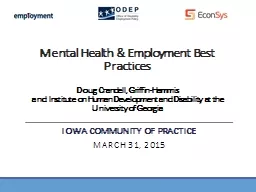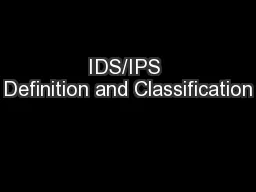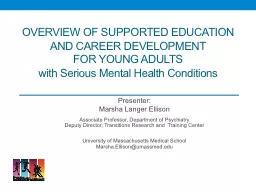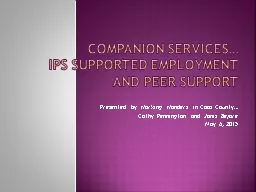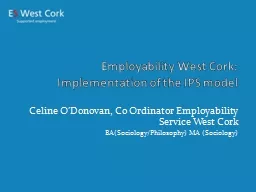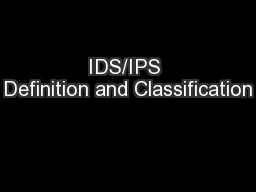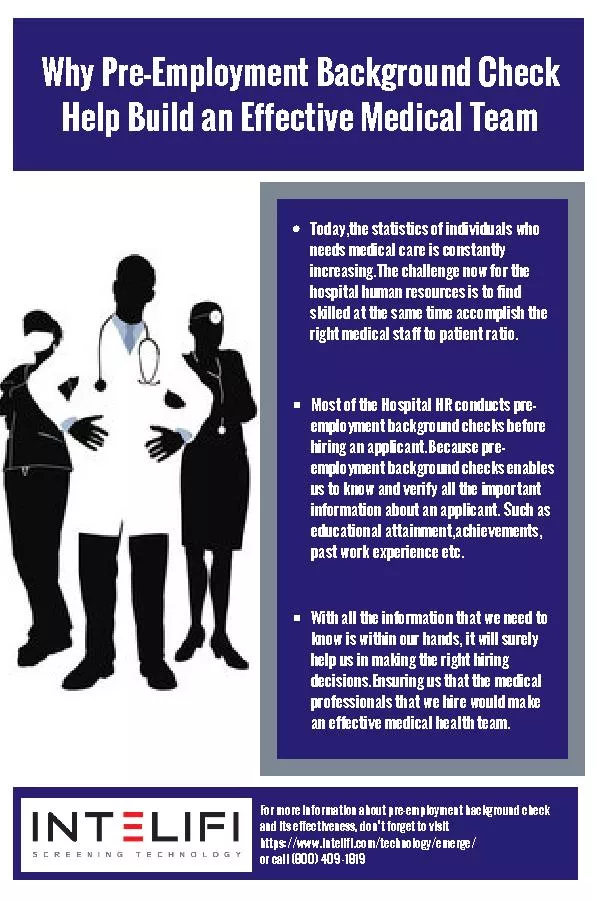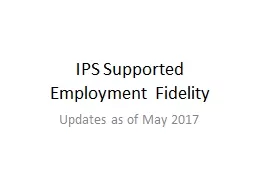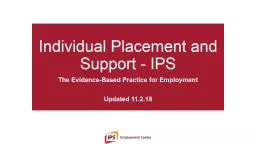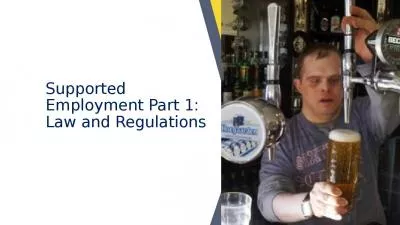PPT-IPS SUPPORTED EMPLOYMENT
Author : ellena-manuel | Published Date : 2018-12-20
The EvidenceBased Practice for Employment Why Focus on Employment Viewed by many as an essential part of recovery Most consumers want to work A typical role for
Presentation Embed Code
Download Presentation
Download Presentation The PPT/PDF document "IPS SUPPORTED EMPLOYMENT" is the property of its rightful owner. Permission is granted to download and print the materials on this website for personal, non-commercial use only, and to display it on your personal computer provided you do not modify the materials and that you retain all copyright notices contained in the materials. By downloading content from our website, you accept the terms of this agreement.
IPS SUPPORTED EMPLOYMENT: Transcript
Download Rules Of Document
"IPS SUPPORTED EMPLOYMENT"The content belongs to its owner. You may download and print it for personal use, without modification, and keep all copyright notices. By downloading, you agree to these terms.
Related Documents



